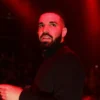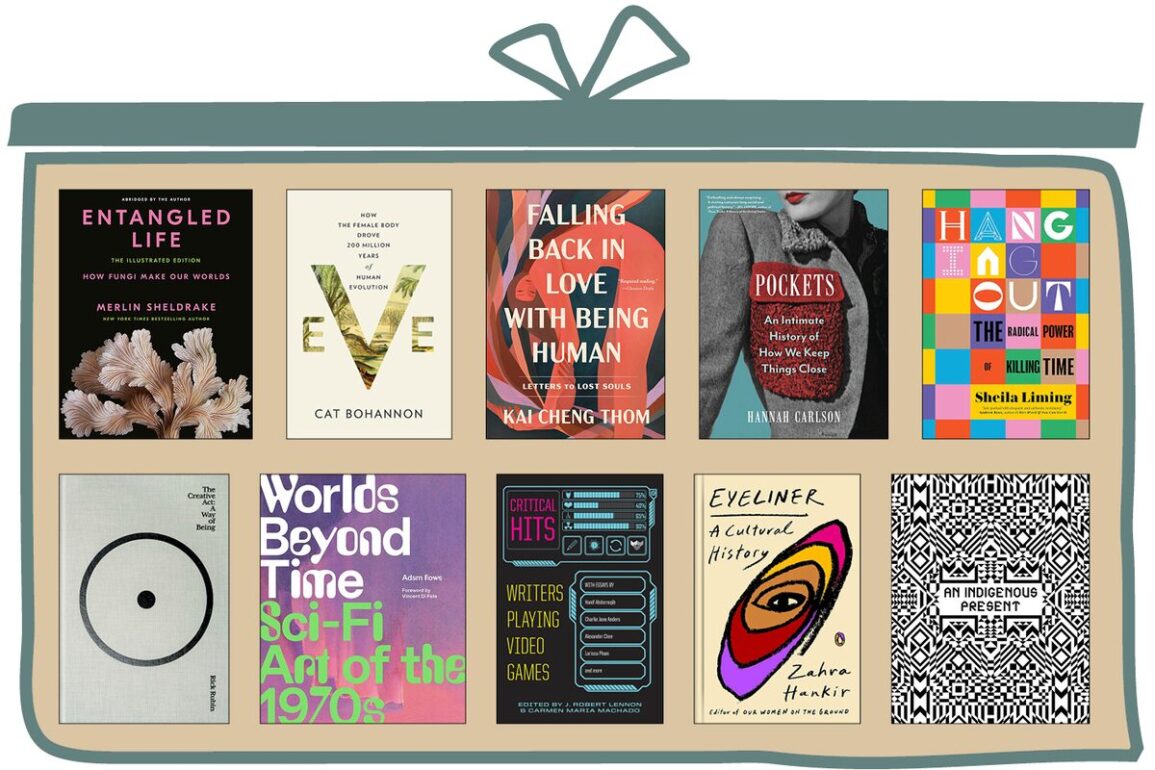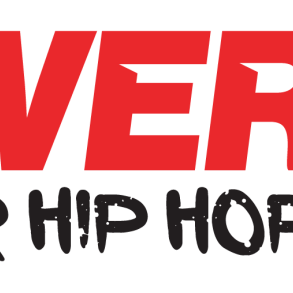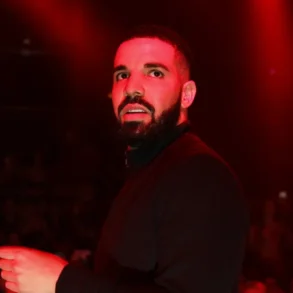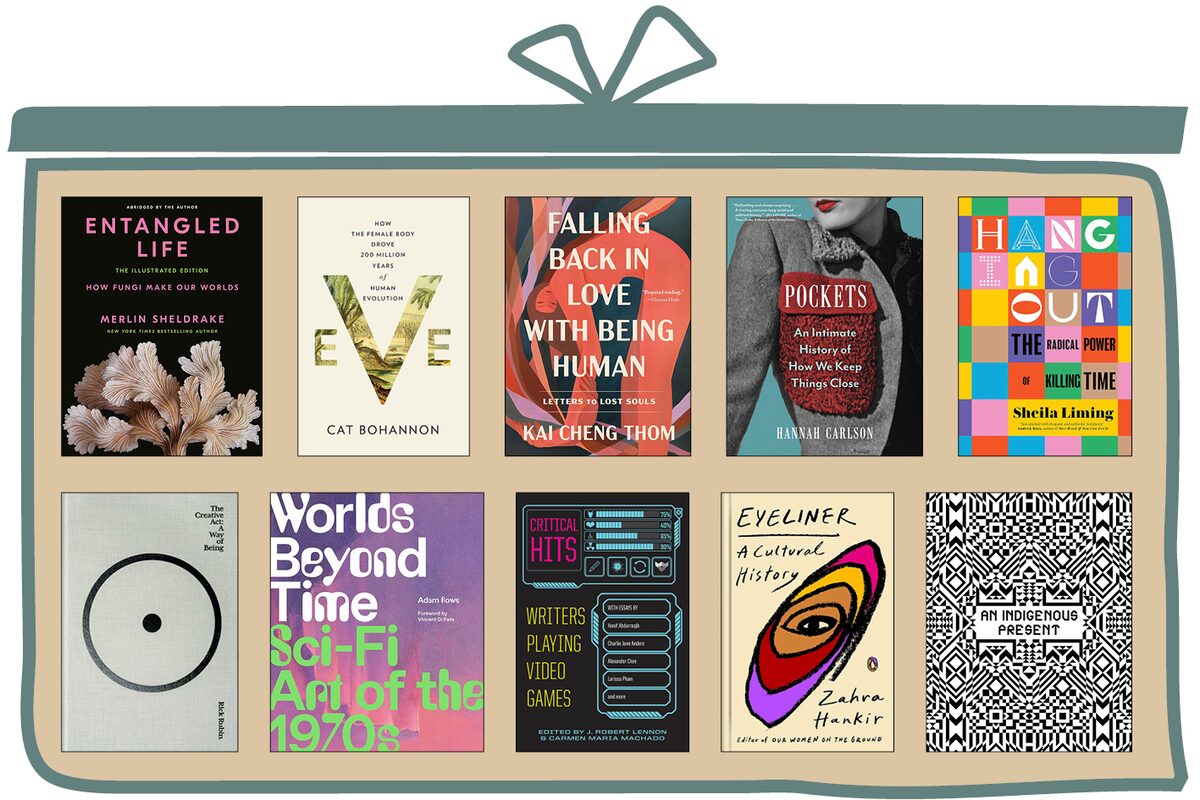
The best books for the kids on your shopping list
Holiday gift guide 2023: Stylish and practical items for everyone in your life
THE ADVENTURER
Hotel Kitsch, Margaret and Corey Bienert (Artisan) The duo behind Instagram sensation @aprettycoolhoteltour showcase their unironic appreciation for cheesy, sleazy and hopelessly romantic-themed lodgings.
The Bathysphere Book, Brad Fox (Astra House) One of the most beautiful books-as-objects of the year is this account of the first days of deep sea exploration and the quest to plumb the wondrous deep with images from the original early logbooks from the 1930s.
Cabin, Will Jones (Thames & Hudson) The British journalist who relocated to rural Ontario traces the yearning for solitude and offers examples alongside practical advice for off-grid living.
The Quickening, Elizabeth Rush (Milkweed Editions) Rush’s previous work, Rising, was a finalist for the Pulitzer Prize for General Nonfiction. In this one she joins a crew of scientists and sailors on a 2019 voyage to Antarctica’s Thwaites Glacier (a.k.a. the Doomsday glacier, which has never before been visited by humans).
Volcanic, John Brewer (Yale University Press) Eruptions are in the news again, which would make this book a topical curiosity were it not for the fact that it showcases a recently discovered early-19th-century visitors’ book full of engrossing details about their observations after reaching the summit of Vesuvius.
Way Makers, Kerri Andrews (Reaktion Books) “This anthology is a start. May it not be the end,” Andrews writes, before tracing the long literary heritage of Gwen John, Virginia Woolf, Cheryl Strayed, Camille T. Dungy and others across countries, genres and centuries.
THE ART AFICIONADO
An Indigenous Present, edited by Jeffrey Gibson (DelMonico Books/Big NDN Press) At nearly 450 pages the scope and perspective of more than 60 leading contemporary Indigenous artists and creative practitioners, according to editor Gibson, “invites an audience to consider the creative and conceptual spaces artists need to think freely, disrupt the flow, take chances, make mistakes, and even fail in the process of creating something new.”
The Story of Art Without Men, Katy Hessel (W.W. Norton) “Why have there been no great women artists?” Linda Nochlin asked provocatively, in her famous 1971 essay in ArtNews. Art historian Hessel (founder of @thegreatwomenartists) seeks to answer that question in this must-read that begins in the Renaissance and proceeds to present day.
E.J. Hughes: Life at the Lake, Robert Amos (Touchwood Editions) The lake in question is Shawnigan Lake, Vancouver Island. The latest coffee-table book in the prize-winning series about the Canadian painter known for images of British Columbia’s landscape and seascape reproduces paintings alongside photographs, sketches and ephemera from his time there.
The Brutalists, Owen Hopkins (Phaidon) Both significant and lesser-known buildings are covered in the curator and architecture writer’s survey of the international architectural movement including Viljo Revell’s Nathan Phillips Square and Toronto City Hall and the University of Lethbridge building by Vancouver-born Arthur Erickson.
Seeing Things, edited by Julian Rothenstein (Redstone Press) If ever the spirit of Instagram’s better angels could be captured between covers, this inspiring little book manages it. By culling elliptical imagery from the grids of creatives such as Neil Gaiman, Roz Chast, Peter Doig, Nina Stibbe, David Byrne and Andrew Motion, the cumulative effect is wonder.
Cassatt-McNicoll: Impressionists Between Worlds, Caroline Shields (Goose Lane) The book is as striking as the Art Gallery of Ontario’s groundbreaking recent summer exhibition, which juxtaposed renowned artist Mary Cassatt with Canadian impressionist Helen McNicoll (who spent most of her career in England and Europe) to highlight striking contrasts and parallel preoccupations in their work, even though they lived a generation apart.
THE BIBLIOPHILE
If It Gets Quiet Later On, I Will Make a Display, Nick Thran (Nightwood Editions) The Fredericton bookseller’s wide-ranging collection of essays, stories and poems, nominally on the interior lives of bookshops and the reading life, touches on what makes the stores so beloved.
Worlds Beyond Time, Adam Rowe (Abrams Books) And you thought rock posters of the 1970s were trippy! Settle in for a memorable, well-researched selection of the obscure, bizarre and surreal psychedelic cover art (and artists) of mass-market science-fiction novels, at peak weirdness in that decade.
Ink & Paper, A Printmaker’s Art, George F. Walker (Firefly Books) For nearly 50 years (and more than 1,000 wood engravings) Canada’s pre-eminent woodcut artist has created narratives to illustrate important figures in Canadian art, politics and history, as well as the literary works of others (Neil Gaiman); this book is a fitting retrospective.
The Shakespeare and Company Book of Interviews, edited by Adam Biles (Canongate Books) Conversations between the celebrated bohemian Paris bookstore’s literary director Biles and authors such as Annie Ernaux, Rachel Cusk, Jesmyn Ward and Colson Whitehead who made appearances there have now been transcribed to delve into themes of identity, the passage of time and the relevance of the novel as form.
The Art of Libromancy, Josh Cook (Biblioasis) The Veteran bookseller unpacks what’s at stake as Amazon’s monopolistic power threatens indie bookselling and the publishing industry.
Librorum Ridiculorum, Brian Lake (HarperCollins) Anyone who’s browsed the dusty shelves of an antiquarian bookshop knows it’s not the first editions that are the marvels – it’s the ludicrous (and often highly specific) oddities, how-tos and downright hilarious titles (such as The History of the Concrete Roofing Tiles, Frog Raising for Pleasure and Profit and The Art of Faking Exhibition Poultry).
THE CULTURE VULTURE
Oscar Wars, Michael Schulman (HarperCollins) When the Academy of Motion Picture Arts and Sciences was founded by a Hollywood studio in 1927, it was a craven marketing scheme; delving into the exclusionary power structures and past controversies of the ever-longer campaign season, this is a must for awards buffs who want to win the office pool.
Comedy Book, Jesse David Fox (Farrar, Straus and Giroux) Dying is easy, comedy is hard. Explaining comedy? Even harder. Yet the Vulture editor’s engaging probe into the workings of the standup craft (from 1990 to near-present day) is a smart, breezy and self-deprecating pleasure to read.
The Black Guy Dies First, Robin R. Means Coleman and Mark H. Harris (Gallery/Saga Press) Billed as the definitive history of Black horror films, this serious (and often seriously witty) work of film history and criticism unpacks the title trope that was firmly established by 1968′s Night of the Living Dead, while also tracking how horror movies reflect Black progress.
Hi Honey, I’m Homo!, Matt Baume (Smart Pop) Beginning with Bewitched, the YouTuber who chronicles pop-culture history looks at the cycles of progress and backlash by analyzing episodes and going behind the scenes of popular TV fare such as Cheers, Golden Girls and Modern Family.
Monsters, Claire Dederer (Knopf) A hybrid of memoir, criticism and essay considers cancel culture and whether one can enjoy art created by morally questionable artists. Figures such as J.K. Rowling, Roman Polanski, Woody Allen, Willa Cather and Bill Cosby are among those considered in this expansion on Dederer’s viral 2017 Paris Review essay “What Do We Do with the Art of Monstrous Men.”
Pandora’s Box, Peter Biskind (William Morrow) The cultural critic whose Easy Riders, Raging Bulls remains the definitive history of New Hollywood now turns his eye on the fall of network TV, the rise of cable, and the recent state and future of home entertainment in the streaming era.
THE EPICURE
Romaine Wasn’t Built in a Day, Judith Tschann (Voracious) Word nerds will rejoice in the California historian’s dive into the origins of food vocabulary. Organized by meal, the etymology includes such delectable morsels as correcting the misconceived roots of Caesar salad – not named for a doomed Roman general but for Caesar Cardini, a restaurateur who first made it in 1924 at the Hotel Caesar in Tijuana, Mexico.
Small Fires, Rebecca May Johnson (Pushkin Press) Food and longing are on the menu in this slim experimental book that reclaims cooking as an intellectual act and plumbs the relationship between cook and recipe (for example, Marcella Hazan’s deceptively simple and yet so complex red sauce). It’s equal parts manifesto, memoir and meditation (it’s by the way gotten an endorsement from Nigella Lawson).
The Upstairs Delicatessen, Dwight Garner (Farrar, Straus and Giroux) This memoir from the New York Times book critic looks at shifting reading and eating habits. Peppered with all the copious literary references to food and meals that you’d expect, it’s organized in themed chapters by meal and occasion, and will become your new host gift.
The Food Adventurers, Daniel Bender (Reaktion Books) From roast pig on the beach of 1840s Tahiti to the saloons of luxury ocean liners in the Jazz Age, Bender (who teaches food studies at the University of Toronto) has pored over postcards, photographs and diaries of tourist journeys to get at how globe-trotting gastronomes influenced menus and tastes once they returned home.
National Dish, Anya von Bremzen (Penguin Press) The James Beard Award-winning author travels to different food capitals to investigate the complicated and unexpected ways dishes came to represent a country.
Where We Ate, Gabby Peyton (Appetite by Random House) The backstories of iconic Canadian dishes such as donairs, poutine and ginger beef get served up in this history of 150 beloved current and bygone Canadian restaurants; it reads like the diary of a cross-country road trip from pre-Confederation to present day.
THE EXTREMELY ONLINE
Critical Hits, edited by J. Robert Lennon and Carmen Maria Machado (Graywolf Press) This essay anthology invites contemporary authors such as Alexander Chee and MariNaomi to reflect on the storytelling and emotional experiences of gaming; a highlight is Elissa Washuta’s moving piece on playing The Last of Us and how it connects to her chronic illness.
Extremely Online, Taylor Lorenz (Simon & Schuster) The tech reporter who is now a columnist at The Washington Post offers a social history of social media, beginning with the mommy bloggers of the early 2000s through to TikTok’s current dominance.
Fans, Michael Bond (Picador) A science writer who specializes in human behaviour journeys into the world of superfans to explore the psychology of subcultures (and the roots of parasocial relationships), delving deep into what makes obsessives such as Furries, Potterheads, Whovians, Janeites and MAGAs tick.
The Internet Con, Cory Doctorow (Verso Books) The Canadian sci-fi author, activist and journalist’s pithy essay “The ‘Enshittification’ of TikTok” made the rounds this year, putting a word to our collective exasperation at what the craven greed of misguided tech strategies has done to ruin social-media platforms and culture. This posits a radical solution to taking the internet back.
Avidly Reads Screen Time, Phillip Maciak (New York University Press) The New Republic’s TV critic offers cultural criticism about Succession, Zoom, TikTok and Twin Peaks as well as the many types of screens that demand our attention everywhere, all the time.
Outrage Machine, Tobias Rose-Stockwell (Legacy Lit) Social media may have broken our brains, but not so much that we can’t learn how to set them right. This ultimately hopeful guide lays bare the tech shifts that have taken place and the strategies that can be used to counter the anger and distrust.
THE GOOD LISTENER
Do Remember! The Golden Era of NYC Hip-Hop Mixtapes, Evan Auerbach and Daniel Isenberg (Rizzoli) Like any good compilation, it’s all in the mix. The hip-hop historian and journalist assemble vintage track lists, rare cover art, and interviews with key players from New York’s rap and mix-tape subculture (such as Fab 5 Freddy, Kid Capri and DJ Kay Slay) to explain how live performance bootlegs on cassette helped propel the now-billion-dollar genre (which marks its 50th anniversary this year).
Parachute Women, Elizabeth Winder (Hachette Books) Winder, who specializes in new biographical facets in female lives with books such as Pain, Parties, Work (on Sylvia Plath) and Marilyn in Manhattan (Marilyn Monroe), turns her gaze to the sophisticated wives, girlfriends and muses who shaped the Rolling Stones.
Quartet, Leah Broad (Faber & Faber) Extensive new research into the lives and careers of Edith Smyth, Rebecca Clarke, Dorothy Howell and Doreen Carwithen not only brings their personalities alive but illuminates how much the four trailblazing 20th-century female British composers contributed to music history.
Do You Believe in the Power of Rock & Roll?, John Robb (Unbound) Being the first person to write about Nirvana and coining the term Britpop are just two moments in Robb’s storied 40-year career-to-date. His evocative pieces from the pit of 1970s punk through rave and EDM are collected here.
Guitar: The Shape of Sound, Ultan Guilfoyle (Phaidon) With glorious detailed photos and profiles of 100 iconic guitar models (dating back to the 17th-century Stradivari Hill guitar), this is a must-have for guitar fans.
Song, John Potter (Yale University Press) You’ll find yourself flipping and scrolling through your music collection with renewed interest after this disquisition on the importance of the song tradition, by an author and singer whose noted career has included both backing vocals for the Who and performing the debut of new works by Arvo Part.
THE HISTORY BUFF
Searching for Franklin, Ken McGoogan (Douglas & McIntyre) The award-winning Canadian historian re-examines the heroic legacy of the 19th-century explorer by drawing on his own research and Inuit oral accounts to posit fresh theories for the disastrous expeditions. If you’re a Franklin or Arctic fan, then this one is a must.
The Dictionary People, Sarah Ogilvie (Knopf) The first headquarters of the Oxford English Dictionary was in a garden shed, which is perhaps the least surprising detail in the linguist and lexicographer’s lively history of the everyday heroes – and more than occasionally, criminals and villains – who contributed to the vaunted reference tome.
A History of Women in 101 Objects, Annabelle Hirsch (Canongate) The 1889 safety bicycle gave women a taste of freedom that redefined both wardrobes and identity by expanding the reach of their world beyond the domestic sphere. It’s among this book’s idiosyncratic gallery of ordinary and intimate objects (dating back to a healed human femur from 30,000 B.C.) that have borne witness to a diverse and complex female history.
The Memoirs of Miss Chief Eagle Testickle, Kent Monkman and Gisèle Gordon (McClelland & Stewart) History, fiction and memoir commingle in this two-volume work by acclaimed Cree multidisciplinary artist Monkman and media artist and writer Gordon, his longtime creative collaborator. Narrated by the titular gender-fluid tribal leader (a recurring character in Monkman’s art), it’s her origin story as well as that of Turtle Island.
Madame Restell, Jennifer Wright (Hachette Books) This captivating portrait of the infamous self-taught surgeon and medical celebrity is also a glance at shifting mid-19th-century social mores, male power players, and their strategic campaigns to curtail female independence and criminalize abortion.
Beyond the Wall, Katja Hoyer (Basic Books) Through never-before-seen documents and interviews, the acclaimed historian examines a vanished country – the rich landscape behind the Berlin Wall that ceased to exist when it fell.
THE KNOW-IT-ALL
How Infrastructure Works, Deb Chachra (Riverhead) Who knew infrastructure could be not just useful but also fascinating? Growing up, the Canadian engineer’s “local charismatic infrastructure” was the Pickering Nuclear Generation Station and she uses her personal experiences to bring to life the social forces behind reservoirs, bridges, highways and other often-unnoticed built networks.
Dust, Jay Owens (Harry N. Abrams) So small and so mundane and yet it has so much to tell us. From cosmic dust in our universe to radioactive fallout left behind at nuclear test sites, Owens combines history and science to deliver a fascinating ode to something most of us never think about.
Knowing What We Know, Simon Winchester (HarperCollins) The master of minutiae and patron saint of know-it-alls is back with another compendium of irresistible facts about how humans acquire, retain and pass on information and data.
Eve, Cat Bohannon (Random House Canada) Ten years in the making, this is an encompassing account of women and their bodies that delves into biochemistry, cognitive science, film studies and more.
The Milky Way Smells of Rum and Raspberries, Jillian Scudder (Icon Books) The astrophysicist tours readers through the most amusing and colourful facts about the universe.
The Canadian Mind, Andy Lamey (Sutherland House) The Canadian journalist and scholar Lamey, who now teaches philosophy at the University of California, analyzes the criticism, fiction and political philosophy of such luminaries as Margaret Atwood, Dany Laferrière, Joseph Boyden and Conrad Black.
THE MINDFUL MAVEN
Hanging Out, Sheila Liming (Melville House) What generational touchstones such as American Graffiti, Slacker, Before Sunrise, Barbershop and Lost in Translation all have in common is how people connect by being with each other. Instead of the frenetic pace of our digital life, we need to just hang out more.
Rest Is Resistance, Tricia Hersey (Little Brown Spark) The past few years of work/life balance reappraisals cemented the growing push against the grind of capitalism and hustle culture. Instead of the need to be constantly productive, Hersey (a.k.a the Nap Lady) recommends resisting by resting.
Enchantment, Katherine May (Riverhead Books) The ability to process major milestones and emotions (joy, trauma, grief or illness) was one of the outcomes of the pandemic. In this follow up to her sleeper hit, Wintering, May suggests we need to retrain ourselves to pay attention by connecting with the natural world.
Seek, Scott Shigeoka (Balance) The nature of curiosity is at the heart of this upbeat three-part guide, and ode, to cultivating and practising it.
Falling Back in Love with Being Human, Kai Cheng Thom (Penguin Canada) As a way of coming back from her crisis of faith and disappointment in humanity while engaged in the movement for queer and trans liberation, the author, a trans Chinese-Canadian poet, penned these gentle but insistent open letters to “lost souls” – allies and outcasts, liars and loving caregivers, transphobes and racists.
Sharp Notions: Essays from the Stitching Life, edited by Marita Dachsel and Nancy Lee (Arsenal Pulp Press) As the editors point out, in the 21st century we don’t need to knit, embroider, weave, bead, make lace or spin yarn. But what these essays by crafters get at, instead, is the nourishment found in the meditative (rather than productive) solace of fibre-arts handiwork.
THE MOGUL
Breaking Twitter, Ben Mezrich (Grand Central Publishing) The bestselling writer of Dumb Money takes plausible novelistic liberties in this dynamic, blackly comic tale of how Elon Musk bought and bungled the social platform and renamed it X.
The Phoenix Economy, Felix Salmon (Harper Business) The acclaimed financial journalist takes stock of the what’s changed and what’s ahead for humans and the economy after the global pandemic.
The Creative Act, Rick Rubin (Penguin Press) Creativity belongs to everyone – not just artists – argues the prolific Grammy-winning producer of Tom Petty, Adele, Neil Young and Johnny Cash. If you can provide a space that allows that creativity to emerge, anything is possible.
The Coming Wave, Mustafa Suleyman with Michael Bhaskar (Crown) As the co-founder of Google-owned artificial intelligence company DeepMind, Suleyman is the consummate insider, deeply engaged and informed on the ethical questions around our present (quantum computers, engineered pathogens) and future applications of AI.
Palo Alto, Malcolm Harris (Little, Brown and Co.) Born and raised in northern California, the journalist applies his personal and professional acumen to systematically dismantle the history, mythology and insidious ethos of Silicon Valley.
The Kingdom of Prep, Maggie Bullock (Dey Street Books) The fashion journalist’s lively account of the changing financial fortunes of J.Crew, the first lifestyle brand, is not only a snapshot of a contemporary industry across eras but of nostalgia and profound shifts in middle-class aspiration, taste and spending.
THE NATURE LOVER
Entangled Life: The Illustrated Edition: How Fungi Make Our Worlds, Merlin Sheldrake (Random House) When Sheldrake’s celebration of the mysterious world of mycology’s lesser-known species became a bestseller, it was only a matter of time before the spectacular variety of fungi he described would get the paparazzi treatment – with more than a hundred images in a visual edition.
Flight Paths, Rebecca Heisman (Harper) The secrets of avian migration were only discovered in the past few decades; the Peabody Award-winning NPR science writer and naturalist details the imaginative methods developed to uncover them, making this a must not only for the birders on your list, but for those addicted to the Cornell Lab of Ornithology’s Merlin birdsong app.
How to Read a Tree, Tristan Gooley (The Experiment) Once upon a time we might have learned the visual clues and secret language of trees through experience or storytelling. This book will make wise naturalists out of us yet.
Darwin and the Art of Botany, James T. Costa and Bobbi Angell (Timber Press) The thinker known for his insights into animal evolution also spent much of his time thinking about plants, as the lesser-known works here demonstrate. The texts are paired with botanical art from the collection in famed socialite and avid gardener Bunny Mellon’s rare manuscripts and book library.
Wild Girls, Tiya Miles (W.W. Norton) The National Book Award-winning historian (All That She Carried) looks at how encounters with nature helped empower diverse historical figures (Louisa May Alcott, Blackfeet tribe member Josephine Langley, Harriet Tubman) in their struggles against patriarchy, colonialism and slavery.
Beastly, Keggie Carew (Abrams Press) While at times a tough read because it covers interactions both charming and horrifying, this is a book for all those who have empathy for animals.
THE POLITICO
Beijing Rules, Bethany Allen (Harper) Longlisted for the Financial times Business Book of the Year, this engrossing read by the award-winning China reporter for Axios goes deep into how the Chinese Communist Party is tying the profit of Western institutions to political acquiescence in its bid for influence.
Park Cruising, Marcus McCann (House of Anansi Press) The 2016 police sting operation that targeted gay and bisexual men having sex in Toronto’s Marie Curtis Park is the human-rights lawyer’s starting point to discuss legal, social and political ideas around the taboo of sex in public.
Gun Country,Andrew C. McKevitt (University of North Carolina Press) A (sadly) perennially timely commentary on the general rise of gun culture in the United States, the country that’s home to nearly half of all civilian-owned firearms in the world.
On Class, Deborah Dundas (Bliblioasis) In this slim volume from the Windsor literary press’s current issues series, the author uses her own experience of growing up poor to thread interviews with writers and activists about the barriers to success in Canada’s widening class divide.
Cold Peace, Michael Doyle (Liveright) The international-relations expert argues that it is imperative that we now do everything we can to avoid a new Cold War – this time with Russia, the United States and China. This one will be exacerbated by cyberwarfare and propaganda through social media.
The Bill Gates Problem, Tim Schwab (Metropolitan Books) Can one of the world’s most powerful billionaires truly be a force for good? The Washington-based journalist’s deeply reported investigation into the Gates Foundation (one of the world’s most powerful charitable organizations) looks at its social experimentation projects around the world and the problem of unconstrained power.
THE STYLE GURU
Fly, Mitchell S. Jackson (Artisan) You don’t have to follow @NBAFashionFits or @LeagueFits to be familiar with the area between the arena and the locker room – the so-called concrete runway that’s the basketball world’s answer to the red carpet. This splashy book catalogues NBA players who flex their fits and dig into the origins of the phenomenon from Clyde Frazier’s cape to Serge Ibaka’s statement scarves.
Narrative Thread, Mark C. O’Flaherty (Bloomsbury) Fourteen conversations with individuals such as milliner Stephen Jones, New York nightlife queen Susanne Bartsch, Oscar-winning costume designer Sandy Powell and Egyptian-born, Canadian-raised industrial designer Karim Rashid, spotlight their unique relationship to fashion.
Eyeliner, Zahra Hankir (Penguin Books) Egyptian queen Nefertiti was famous for her eye flick; there’s a region in Chad where Wodaabe men wear kohl and perfect it throughout the day; in Iran, it’s a tool of civil disobedience. There’s more to eyeliner than meets the eye declares the Lebanese British journalist as she dissects its meaning (rest assured: there’s a whole chapter on Amy Winehouse).
Fresh, Fly, Fabulous, edited by Elizabeth Way, et al. (Rizzoli Electa) This lavishly illustrated book of reminiscences (based on the recent exhibition at the Museum of FIT in New York) gathers insights not only into hip-hop’s profound effect on music but its deep influence on luxury fashion, celebrity and pop culture.
CBK, Sunita Kumar Nair (Harry N. Abrams) Nearly 25 years after Carolyn Bessette Kennedy’s untimely death in a plane crash alongside her husband John F. Kennedy Jr., the onetime fashion publicist still exerts an influence. The book focuses on her style through essays and interviews with designers, photographers and fashion figures, and explores why she is still a muse to many.
Fashioning the Beatles, Deirdre Kelly (Sutherland House) The former Globe features writer dissects how each of the Fab Four developed their look – both individually and as a cohesive unit – and offers insights into how they influenced fashion and popular culture.
THE UNCLASSIFIABLE
A Book of Noises: Notes on the Auraculous, Caspar Henderson (University of Chicago Press) The term “auraculous” is the author’s own invention, a portmanteau of aural and miraculous, as he researches sounds made from space, Earth, life and humanity.
300,000 Kisses, Sean Hewitt and Luke Edward Hall (Clarkson Potter) British painter and designer Edward Hall applies his distinctly contemporary take on classical iconography to vividly illustrate this anthology of 40 queer Greek and Roman love stories which have been translated by Hewitt.
Pockets, Hannah Carlson (Algonquin Books) There’s a fine line between secrecy and privacy, as the history of “pocket sexism” reveals. Pockets (or the lack thereof, just ask any woman!) are about gender, class and control.
The Lost Subways of North America, Jake Berman (University of Chicago Press) Using meticulous archival research, the cartographer and artist has successfully plotted maps of old train networks covering 23 North American metropolises.
Tabula Rasa: Volume 1, John McPhee (Farrar, Straus and Giroux) Over seven decades, the legendary New Yorker staff writer has written numerous articles. This book is about all the ones he never got around to writing; some are a single paragraph, others a few pages.
How to Be Multiple, Helena de Bres (Bloomsbury) Through musings on twinship, the philosophy professor at Wellesley who has an identical twin sister, Julia (the book’s illustrator), considers our place in the world, the nature of community and more broadly, what it means to be human.
This post was originally published on this site be sure to check out more of their content.



